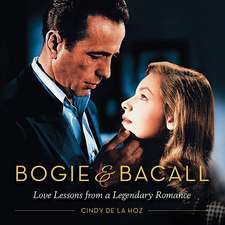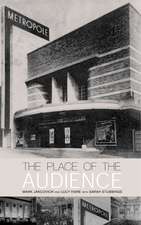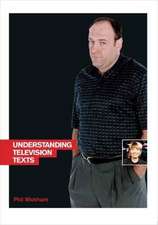Quality Popular Television: Cult TV, the Industry and Fans
Autor James Lyonsen Limba Engleză Paperback – 2 ian 2008
Preț: 231.89 lei
Nou
Puncte Express: 348
Preț estimativ în valută:
44.37€ • 46.33$ • 36.64£
44.37€ • 46.33$ • 36.64£
Carte disponibilă
Livrare economică 25 martie-08 aprilie
Preluare comenzi: 021 569.72.76
Specificații
ISBN-13: 9780851709413
ISBN-10: 0851709419
Pagini: 204
Dimensiuni: 153 x 234 x 14 mm
Greutate: 0.4 kg
Ediția:2008
Editura: British Film Institute
Colecția British Film Institute
Locul publicării:London, United Kingdom
ISBN-10: 0851709419
Pagini: 204
Dimensiuni: 153 x 234 x 14 mm
Greutate: 0.4 kg
Ediția:2008
Editura: British Film Institute
Colecția British Film Institute
Locul publicării:London, United Kingdom
Notă biografică
Dr
Mark
Jancovich
is
Reader
and
Director
of
the
Institute
of
Film
Studies
at
the
University
of
Nottingham.
James
Lyons
is
a
lecturer
in
film
at
the
University
of
Exeter.
He
is
the
author
of
"John
Sayles:
Independence,
Integrity
and
the
Borders
of
Identity"
(co-written
with
Mark
Jancovich,
in
Yvonne
Tasker,
ed,
Fifty
Contemporary
Film
Makers)
and
a
member
of
the
editorial
advisory
board
of
Scope:
An
Online
Journal
of
Film
Studies
Textul de pe ultima copertă
Why
are
some
contemporary
television
shows
so
compelling?
The
Sopranos,
Buffy
the
Vampire
Slayer,
Friends
and
ER
are
examples
among
many
of
a
new
era
of
the
'must-see'
programme.
These
shows
and
others
like
The
X-Files
and
Ally
McBeal,
have
a
compulsiveness,
a
depth
of
characterisation
and
'back-story'
that
puts
most
of
cinema
to
shame.
Quality
Popular
Television
looks
at
this
new
category
of
'cult'
television
(mostly
US-produced)
and
the
reasons
for
its
emergence.
Looking
at
shows
as
diverse
as
Ally
McBeal,
Martial
Law,
Buffy,
Lois
and
Clark,
Star
Trek:
The
Next
Generation
and
Ellen
the
book
examines
the
particular
qualities
necessary
for
success
and
how
they
relate
to
issues
such
as
the
economics
of
network
scheduling,
the
growth
of
the
internet
and
contemporary
debates
about
television
audiences.
This
important
new
book
provides
an
invaluable
window
on
transformations
in
contemporary
television
culture.








